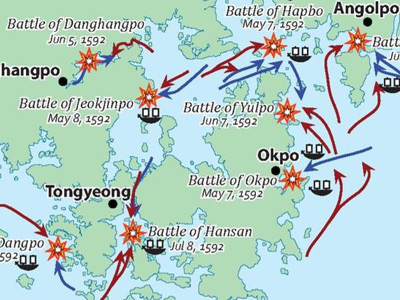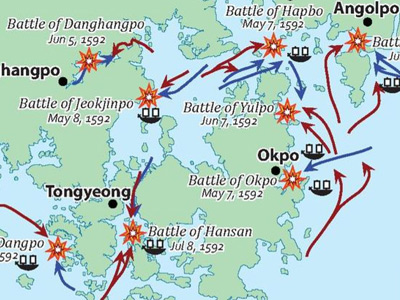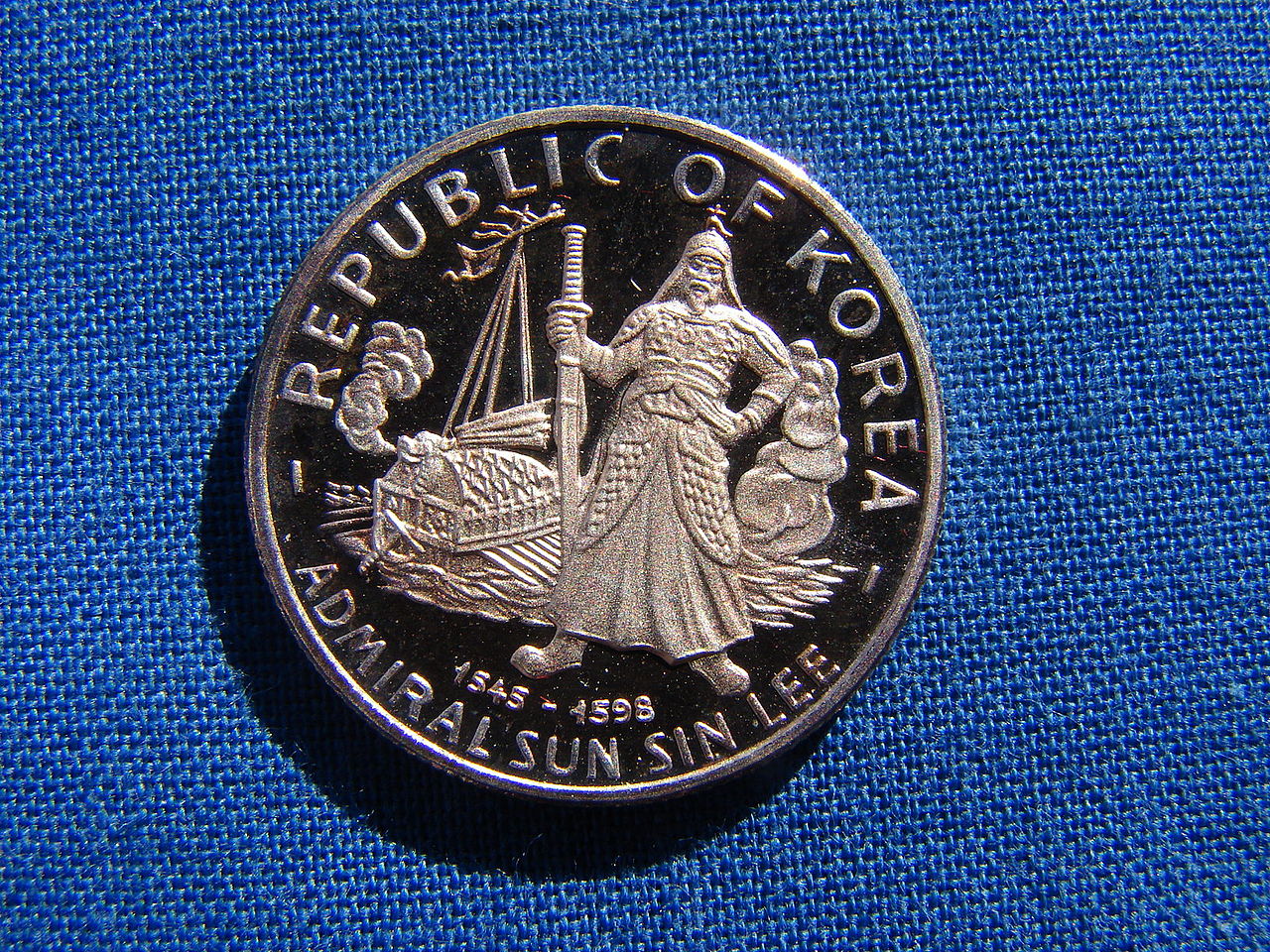Battle of Myeongnyang (1597)

Background
Due to Japanese intrigue taking advantage of the fractious politics of the Joseon Dynasty court, Admiral Yi Sun-sin was impeached and almost put to death. Yi was instead tortured and demoted to the rank of a common soldier. Yi's rival, Admiral Won Gyun, took command of the Joseon fleet, which under Yi's careful management had grown from 63 heavy warships to 166.
Won Gyun was an incompetent military commander who immediately began squandering the Joseon Navy's strength through ill-conceived maneuvers against the Japanese naval base at Busan. In the Battle of Chilchonryang, the Japanese navy, with Todo Takatora in overall command, outmaneuvered the Joseon navy and virtually wiped it out. Soon afterwards, the Japanese reinforced their garrisons in Busan and various forts in the southern coast of Korea, and began the second invasion.
With the Joseon navy taken out of the scene, the Japanese believed that they now had free access to the Yellow Sea and could resupply their troops through this sea route as they advanced northward. In the 1592 campaigns, Admiral Yi prevented the Japanese from resupplying their troops in this manner and kept their ships holed up at their main bases in Busan harbor.
The Japanese had started the second war and renewed their offensive, laying siege and capturing the city of Namwon in September 26 and fighting the Ming Chinese army to a standstill in Jiksan on September 7. The Japanese army then awaited supplies and reinforcements from their navy, who would need to enter the Yellow Sea to reach the western coast of Korea. The army, thus supported by their navy, planned to make a major push to recapture Hanyang (modern Seoul).
HISTORY

RESOURCES
This article uses material from the Wikipedia article "Battle of Myeongnyang", which is released under the Creative Commons Attribution-Share-Alike License 3.0.
© Stories Preschool. All Rights Reserved.










